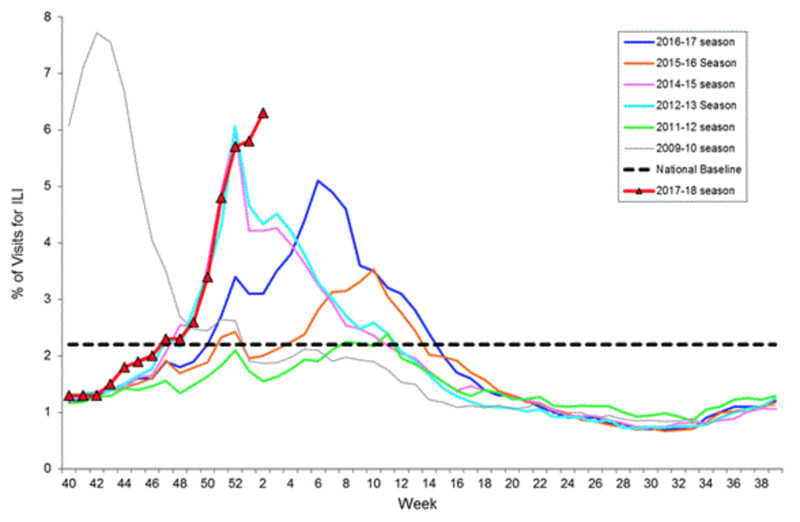Flu epidemic officially worst since 2009's pandemic
The CDC made it official today: This year's flu epidemic has crossed the 2014 flu epidemic's threshold, and has become the worst flu season since 2009's H1N1v "swine flu" pandemic. Similar stories began cropping up this week in trade publications. The Pacific Northwest, in particular, has been hit incredibly hard.
By the way, I am sorry the WSJ story is behind a paywall. If you work really hard, you might be able to read it; however, you may find it via other sources.
Also, NBC News last night ran a story confirming my blog of earlier that same day. The NBC story confirms the "cytokine storm" as a leading factor in the deaths of young people from this flu. In yesterday's blog, I theorized that the cytokine storm was largely responsible.

And, contrary to every news story you read, heard or viewed last week: The epidemic is getting worse, with no signs of abating. The website vox.com has an excellent article regarding this year's flu season. The chart above illustrated that this year's epidemic continues to climb, and has surpassed every year, save 2009, when we had the H1N1v swine flu pandemic.
Of particular interest in the Vox story: H3N2 appears to drift (mutate) within eggs during the vaccine production itself! Also, Australia's death rate from flu this season was more than four times higher than average. Since Australians are generally regarded as a heartier lot than Americans, and the virus circulating in the Northern Hemisphere is essentially the same as the one that circulated in Australia in the summer of 2017 (the Southern Hemisphere's flu season), and the Southern Hemisphere vaccine composition was identical to ours and ours remained unchanged for H3N2 since last year, we can safely assume similar outcomes will happen. Meaning, many more Americans will die of H3N2 than we have seen in a long, long time. More than 2009.
Time Magazine in 2014 ran an excellent story on the origins of the 1918 H1N1 pandemic flu virus. Back in 2014, researchers discovered the 1918 pandemic -- the worst pathogen attack ever to hit the world (to date) -- was an H1N1 swine virus that somwhow shifted by picking up a stray bird flu gene. For more on antigenic shift and antigenic drift, search my blogs. Anyway, H3N2 is a purely avian flu -- the former 1968 Hong Kong Flu pandemic strain -- and packs a nasty punch.
There is another H3N2, a swine variant, which is circulating in the Midwest -- but this is not this year's worry. What I found fascinating is that, between 1880 and 1900, Americans were exposed to an H3N8 virus, and not an H1. People prior to 1880 had been exposed to an H1N8 virus. People exposed to an H1 fared much better than the people who were exposed to an H3. By the way, H3N8 is commonly known as equine influenza. Equine influenza made a 3pecies jump in the early 200s to dogs -- in Florida. H3N8 is now also known as canine influenza, joined by H2N2 canine influenza, a cousin of what we are fighting this season, and first detected in Chicago a couple of years ago. H3N2 canine flu is now available as a bivalent dog vaccine, along with H3N8.
To summarize: This year's flu season is the worst since 2009 -- a pandemic year. It is still circulating and still infecting. We have not peaked. Hopefully, we will peak, and soon.

Reader Comments